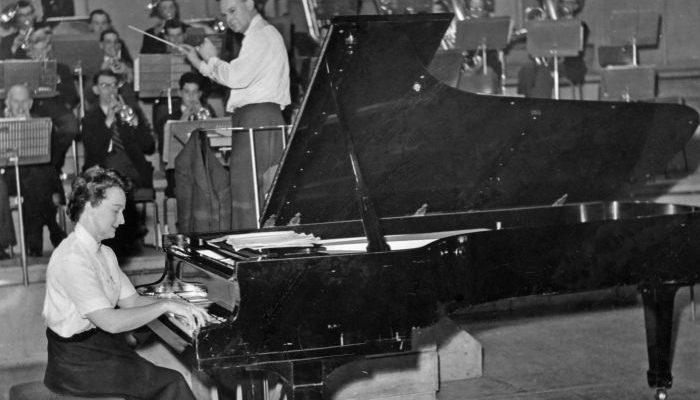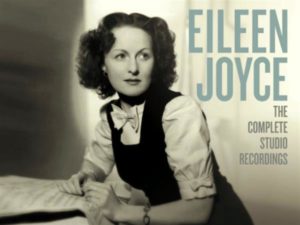 A number of CD companies are doing a wonderful job producing box sets featuring a complete artist’s recordings, such as Sony’s exemplary Maryla Jonas set that was featured here recently. Eloquence have more than outdone themselves with their utterly superb deluxe ten-disc set Eileen Joyce: The Complete Studio Recordings, a production that is cause for celebration indeed.
A number of CD companies are doing a wonderful job producing box sets featuring a complete artist’s recordings, such as Sony’s exemplary Maryla Jonas set that was featured here recently. Eloquence have more than outdone themselves with their utterly superb deluxe ten-disc set Eileen Joyce: The Complete Studio Recordings, a production that is cause for celebration indeed.
Previous issues have included a 2-LP set released in 1987 on the HMV Treasury series – The Eileen Joyce Album – which featured a number of her best solos from 1933 to 1942, in addition to the rarely-released Turina Raspodia sinfonica. Since that time fans of her playing have had a wonderful selection of solos available on a 1999 Testament CD, in addition to some discs on Pearl and Japanese EMI and her rarely-heard harpsichord performances of Bach Concertos on an EMI CD set. APR’s superb 5-disc set of The complete Parlophone and Columbia solo recordings 1933-1945 from 2011 was the most wide-ranging release thus far. This current volume, however, is the first time that her complete solo piano, piano concerto, chamber, and harpsichord concerto recordings have been compiled, and the result is absolutely fantastic.
A task this comprehensive could easily have any number of flaws but fortunately Eloquence, in their clearly well-planned approach, have managed to produce a thoroughly satisfying tribute to the great Australian pianist. In a set covering a wide range of repertoire recorded over the course of decades, arranging the sequence of the recordings can be particularly challenging: should they be arranged sequentially by session, by year, by composer, or some combination of both? The choice in this case was quite different than that of the APR set, as not just solos but also chamber music and concerted works are included in this new edition.
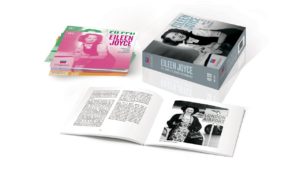 Eloquence made a sequencing choice that is logical and appropriate, even if it may not be to everyone’s liking, presenting works in largely chronological order by composer within the parameters of recording era: CDs 1-4 consist of Parlophone recordings, CDs 5-6 Columbia recordings, CDs 7-8 Decca recordings, CD 9 features the remaining Decca recordings together with HMV recordings and some Saga recordings, and the final CD 10 includes the rest of the Saga recordings. As a result, some orchestral or chamber performances appear on CDs with solos, not always at the beginning or end of the disc: the Mozart Rondo in A Major KV386 with orchestra is track 3 of 18 on Disc 1 which is otherwise filled with solos, for example, and the Mendelssohn Piano Concerto No.1 shares a disc with harpsichord concertos and piano solos. However, the Eloquence arrangement is logical, following an organizing principle that respects Joyce’s musical and pianistic evolution as well as the overall historical style of the works being performed.
Eloquence made a sequencing choice that is logical and appropriate, even if it may not be to everyone’s liking, presenting works in largely chronological order by composer within the parameters of recording era: CDs 1-4 consist of Parlophone recordings, CDs 5-6 Columbia recordings, CDs 7-8 Decca recordings, CD 9 features the remaining Decca recordings together with HMV recordings and some Saga recordings, and the final CD 10 includes the rest of the Saga recordings. As a result, some orchestral or chamber performances appear on CDs with solos, not always at the beginning or end of the disc: the Mozart Rondo in A Major KV386 with orchestra is track 3 of 18 on Disc 1 which is otherwise filled with solos, for example, and the Mendelssohn Piano Concerto No.1 shares a disc with harpsichord concertos and piano solos. However, the Eloquence arrangement is logical, following an organizing principle that respects Joyce’s musical and pianistic evolution as well as the overall historical style of the works being performed.
Using more discs might have shifted this arrangement somewhat, but also would have not only added to the cost but perhaps limited the possibility for including such a sizeable booklet with the set, and it must be said that the accompanying documentation in this production is beyond exemplary in every way. The CD listings itemize each work together with the matrix number, original record number, and recording date – wonderful for those interested in detailed discographical information – but this is all typeset in a way as to be unobtrusive to those who wish to focus on the contents of the disc. (Fortunately these details are not tucked away at the end of each CD’s listing, nor in fine print that requires an electron microscope and linking recording dates to multiple track numbers – Sony could learn from Eloquence in this regard.) The booklet is a wealth of information: four wonderfully written essays rich in fascinating information and in a logical sequence, beautifully arranged with elegant photographs. Bryce Morrison writes about Eileen, giving personal reminiscences of his encounters with the pianist; David Tunley writes about The Early Years; Victoria Rogers expands on A Brilliant Career; and the set’s producer Cyrus Meher-Homji gives fascinating details about The Recordings. The writing in each case is as polished as Joyce’s pianism, as magnetic of one’s attention as her playing, providing terrific insight into her character, life, artistry, and recording career – captivating reading to go along with the mesmerizing playing on the CDs.
Sound quality is obviously of prime importance in the presentation of historical recordings, with most large companies generally opting for a more streamlined LP-like sound, reducing the hiss and crackle of old records at the expense of higher frequencies. Fortunately in this release the equalization is such that surface noise is not obtrusive while most frequencies are well represented. Here again it is impossible to please all collectors but the sound to my ears is very satisfactory.
The performances are, as those familiar Joyce’s artistry will expect, absolutely remarkable. While particularly known for her pristine clarity and evenness of articulation and passagework, Joyce delivers readings that go beyond just brilliant technique and dazzling pianism. With her seemingly effortless technical command (which she developed through lots of effort that is not evident from the apparent ease and lightness that characterizes her performances), she is able to perform with a clarity and transparency that helps reveal both the structure and content of works she plays, regardless of epoch. By and large her readings are filled with rhythmic momentum, exceptionally precise and clear fingerwork, judicious use of the pedal, and beautifully crafted phrasing.
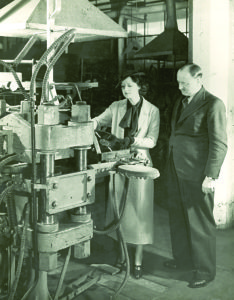
Having long enjoyed the HMV Treasury LPs, Testament CD, and APR set, I was familiar with Joyce’s early solo recordings, although in this current sequence the Schubert Andante in A Major D604 caught my attention more than before, moving me very deeply with its gorgeous phrasing and tonal palette. I had not previously heard the aforementioned Mozart Rondo KV386 for piano and orchestra and it too is delightful. Of course the first few discs’ Parlophone recordings feature some all-time classics, among them her dazzling La Leggierezza, legendary de Schlözer Etude (a work that the booklet reveals as being a seminal one in her early career), that gorgeous Fauré Impromptu No.2, and other marvellous readings of encore-style works (Palmgren’s En Route and Henselt’s Si oiseau j’étais continue to delight). Her chamber music performances – Arenksy’s Trio in D Minor and Haydn’s Trio No.39 – are wonderfully played, as are the concerto performances, including a biting Ireland Concerto in E-Flat Major and Shostakovich’s buoyant Piano Concerto No.1 (which she had introduced to England, to great acclaim).
I was not familiar with Joyce’s Decca recordings and so I was very happy to hear her terrific readings of Mozart (Sonata No.7) and Beethoven (Pathetique and a Bagatelle), though I found her Schumann Papillons somewhat lacking the vitality, momentum, and crispness that I had expected. Two Chopin Waltzes were lovely – a gorgeous B Minor Op.69 No.2 and previously unpublished E Minor Op. Posth (from 1947). Among concerted works – all recorded in 1946-47 – the Tchaikovsky Second Piano Concerto has long been the subject of interest on the part of collectors and it receives its first ever release here.
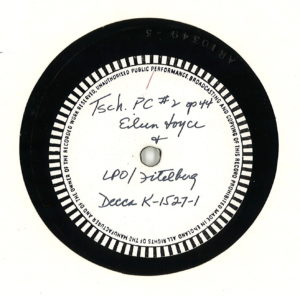
It was apparently not issued due to ‘technical faults’ but I wonder if both sound quality and aspects of the performance may have led to its being withheld: the piano seems a bit distantly mic’ed, although the overall sound is very good, and in the first 78rpm disc’s performance, Joyce seems a little less engaged. However, this soon changes and she lets caution to the wind for the rest of the work – perhaps not as volcanic as I might have expected, but a very satisfying and spirited performance once she gets into it. The Rachmaninoff – her playing of which was featured in two films, Brief Encounter and The Seventh Veil, which helped to popularize the work – is wonderful, as are the Franck Variations Symphoniques and Mendelssohn G Minor. Less known (to me anyway) was the Bliss Baraza (from Men of Two Worlds), featuring a men’s chorus (shades of Busoni’s mammoth Concerto but only 7 minutes long), which also receives a fantastic performance.
When I had first encountered Joyce’s harpsichord recordings on an EMI set in a second-hand shop in London a few years ago, I had had no idea that she had made them, let alone developed such a focused interest in the instrument but according to Joyce’s involvement with the instrument was far more in-depth than I could have imagined: starting in 1951 she performed Bach Concertos on the instrument and from 1952 to 1961, she gave annual Bach concerts at Royal Festival Hall together with early music proponent Thurston Dart, with additional concerts later in 1967 and 1969 (despite having officially ended her career as a pianist in 1960). Her readings here as crisp, buoyant, and satisfying as her more celebrated readings at the piano.
The final recordings from Joyce’s career are an LP of Piano Favourites and the Grieg Piano Concerto from the Saga label in 1960. The solos I had only heard in a YouTube upload and they are truly wonderful, her disarming simplicity in familiar pages such as the once hackneyed Für Elise and Turkish March revealing that her touch, fluidity, and technique were still at their peak. Nevertheless, with Saga being under dubious ownership (run by William Barrington-Coupe, who decades later would be found guilty of forging recordings of multiple pianists and passing them off as private recordings of his wife, Joyce Hatto) her recording career halted and she opted to suddenly end her career as a soloist.
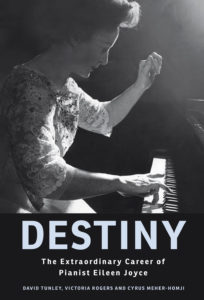 As if this 10-disc set weren’t glowing enough a tribute to this marvellous performer, the producer of the set, Cyrus Meher-Homji (who deserves all the adulation that is possible to receive for his dedication to Joyce’s cause), also played a key role in a memorial book about the pianist. Published by Lyrebird Press with The University of Melbourne in Australia, Destiny: The Extraordinary Career of Pianist Eileen Joyce features essays by of three of the four writers who penned essays in the Eloquence set’s booklet, David Tunley, Victoria Rogers, and Meher-Homji himself. As is the case in the booklet issued with the CD, the extended essays in this volume are wonderfully written and make for fascinating reading.
As if this 10-disc set weren’t glowing enough a tribute to this marvellous performer, the producer of the set, Cyrus Meher-Homji (who deserves all the adulation that is possible to receive for his dedication to Joyce’s cause), also played a key role in a memorial book about the pianist. Published by Lyrebird Press with The University of Melbourne in Australia, Destiny: The Extraordinary Career of Pianist Eileen Joyce features essays by of three of the four writers who penned essays in the Eloquence set’s booklet, David Tunley, Victoria Rogers, and Meher-Homji himself. As is the case in the booklet issued with the CD, the extended essays in this volume are wonderfully written and make for fascinating reading.
The 200-page book is scholarly in that it has a very comprehensive approach that includes ample footnotes but it is anything but dry: it is absolutely engaging, written in a style that is factual while also eloquent and captivating. Chapter One – An unusual childhood for a concert pianist – explores how a talented young girl growing up in a truly rough, primitive rural area of Australia came to be discovered and how her studies in Europe were arranged. While I had known that Joyce had come from the Australian countryside, I had not quite recognized how desolate, challenging, and inhospitable that environment had been to the young girl and her musical gifts, and in this chapter, Tunley together with Jean Farrant paints a detailed portrait of the adverse conditions of her childhood and how it came to be that she should end up in Leipzig studying with master teachers whose language she didn’t speak when she arrived. In Chapter Two, Leipzig and London: Mastering the art of technical and musical refinement, David Tunley discusses Joyce’s training with Teichmuller, Pauer, and Matthay, as well as her time with Adelina de Lara, including a discussion of piano pedagogy in Germany that explores theories coming from Ludwig Deppe that were admired by Matthay. Chapter Three, An extraordinary career unfolds, finds Victoria Rogers discussing Joyce’s arrival in London in 1930 and BBC Proms debut later that year with Prokofiev’s then-recent Third Piano Concerto (what a shame no recording exists of Joyce in this work!). Also explored are Joyce’s long career with the BBC, her wartime performances, and the ‘Golden Years’ of her career (1945-60). Rogers sets the stage beautifully with fascinating background to both musical scene in London as well as the BBC, and provides very interesting details, such as the repertoire of her recital programs 48-49, in addition to reflecting on her sudden retirement in 1960.
In Chapter Four, The celluloid piano: At the movies with Eileen Joyce, Rogers explores Joyce’s appearance in eight films over the course of nine years. Once again, Rogers does a brilliant job of providing historical context on the evolution of commercial movies before exploring the risks facing classical musicians who might be considered less ‘serious’ should they appear in studio features before exploring each of Joyce’s cinematic appearances. Chapter Five shifts the focus to an aspect of Joyce’s career that saw her be taken as a more serious musician: although it is a brief chapter, Seduced by the harpsichord: Eileen Joyce and the early music movement finds Rogers once again expertly providing both the big picture and details of Joyce’s fascination with the harpsichord as the early music movement began gaining traction in the UK, Joyce’s role in which has not previously (to my knowledge) been widely explored. In Chapter Six, the CD set’s producer Cyrus Meher-Homji discusses Eileen Joyce and the gramophone: The recording career, another exploration that is highly readable and thoroughly fascinating. Filled with contextual insights about the recording industry at each stage of her record contracts, the chapter will delight Joyce’s fans with all the illuminating information that Meher-Homji provides (his essay in the CD booklet already being a terrific read), including contemporary reviews, behind-the-scenes insights and correspondence, and Joyce’s presence on records in the form of reissues. Finally, Chapter Seven’s Epilogue finds all three authors summarizing the explorations of the book, a wonderful appraisal of Joyce and her place in the pianistic pantheon. The book also includes some invaluable references in its appendices: Joyce’s Concerto Repertoire, Recital Repertoire, details of her Harpsichord Concert Series, and a discography.
The book is currently only available in Australia (click this link) but it is more than a worthy investment for fans of this great pianist. The CD set is readily available internationally and is an absolute must-have for fans of great piano playing. Kudos to all involved in both productions for such a glowing tribute to this masterful musician. Eileen would be thrilled.
To close, Eileen herself, in that legendary 1933 de Schlözer Etude recording from her first session:
And it is also fascinating to hear the artist describe some of her life in her own words. What a life she lived!
